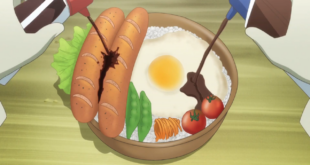Adrian Sol
Daily Stormer
January 30, 2020

This man was just splashed with water from the Pacific Ocean. Seriously.
Climate change is at it again.
This time, the climate has changed to the point where the Pacific Ocean is now a giant vat of acid, ready to melt the flesh from people’s bones.
Don’t think this is possible? Think again. On Venus, it’s literally raining sulfuric acid.
Experts believe Venus’ climate is like this because Venusians didn’t have Jews and small children telling them to watch their carbon emissions.
So it’s totally believable, nay, likely, that the ocean is now acidic.
CNN:
The Pacific Ocean is becoming more acidic, and the cash-crabs that live in its coastal waters are some of its first inhabitants to feel its effects.
The Dungeness crab is vital to commercial fisheries in the Pacific Northwest, but lower pH levels in its habitat are dissolving parts of its shell and damaging its sensory organs, a new study found.
The ocean is dissolving crabs, folks. Better stay away from the water from now on.
This guy thought he’d go surfing. Got melted right up.
How will the climate change next?
Their injuries could impact coastal economies and forebode the obstacles in a changing sea. And while the results aren’t unexpected, the study’s authors said the damage to the crabs is premature: The acidity wasn’t predicted to damage the crabs this quickly.
“If the crabs are affected already, we really need to make sure we pay much more attention to various components of the food chain before it is too late,” said study lead author Nina Bednarsek, a senior scientist with the Southern California Coastal Water Research Project.
The findings were published this month in the journal Science of the Total Environment and funded by the National Oceanic and Atmospheric Administration (NOAA). The agency studies ocean acidification and how changing pH levels are impacting coasts.
The ocean is acidifying because it’s absorbing more carbon dioxide from the atmosphere, which lowers pH levels in the water.
Ocean acidification changes the coasts, releasing excess nutrient that can create algae blooms and increasing sea temperatures and salinity, according to NOAA.
But for crustaceans and coral that rely on carbonate ions, which are less abundant in more acidic waters, to build their shells and coral skeletons, it becomes more difficult to build strong shells.
It’s not just crabs, either: Oysters, clams and plankton all rely on the same carbonate ions to strengthen themselves. And humans and sea creatures alike rely on them — some for food, others for economic security.
Oh.
The water isn’t literally dissolving the adult crab’s shells. The shells are just becoming weaker because the nutrients they need are becoming more scarce.
The acidification corroded the young shells of Dungeness crab larvae, which could impair their ability to deter predators and regulate their buoyancy in the water, the researchers said.
The crab larvae that showed signs that their shells were dissolving were smaller than the other larvae, too. This could cause developmental delays that could mess with their rate of maturation.
The tiny hair-like structures crabs use to navigate their environments were damaged by the low pH levels, too — something scientists had never seen before. Crabs without these mechanoreceptors could move more slowly and have difficulty swimming and searching for food.
So the crabs getting literally burned are just larvae, and it’s not even mortal injuries being discussed.
Moreover, this is only some parts of the coast lines. And while the crabs and other shelled animals are suffering, the plants are thriving because of the increase in available nutrients.
So who even knows if this is a good thing or a bad thing in the long run.
Ultimately, the earth’s conditions are constantly changing, and the various ecosystems and their respective lifeforms just have to adapt to it, like they’ve done for millions of years. Whatever climate change is going on now pales in comparison to the non-stop volcanic eruptions, tsunamis, meteor strikes and comet impacts, magnetic pole shifts, successive ice ages and so on that have been happening since the beginning of time.
And all the life forms that exist today have successfully survived through all these climate changes, including humanity.
Crabs have existed for 200 million years. I think they’ll survive a slight decrease in the ocean’s PH levels.
 Daily Stormer The Most Censored Publication in History
Daily Stormer The Most Censored Publication in History





